Orchha: Raja Mahal and Jahangiri Mahal
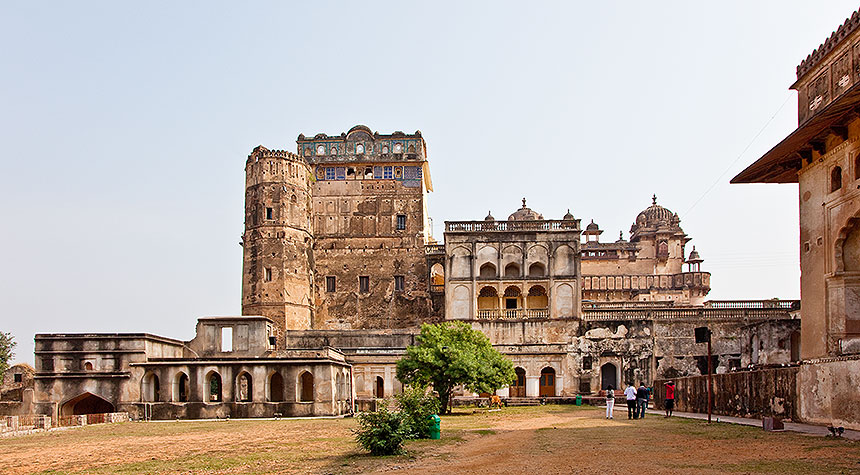
Today we are motoring southeast from Agra to Khajuraho, but we take a small detour to see some of what is left at the old fortified town of Orchha. Old Orchha is situated on an island formed by a bend of the Betwa River, and served as the capital of the Bundela kings from 1531 to 1738. Within the fortified walls are the remains of three major palaces and some other related buildings. We will visit the earliest two palaces, the Raja Mahal (1560) and the Jahangiri Mahal (1626). We start with the Raja Mahal (above), which we enter under the arched doorway below.
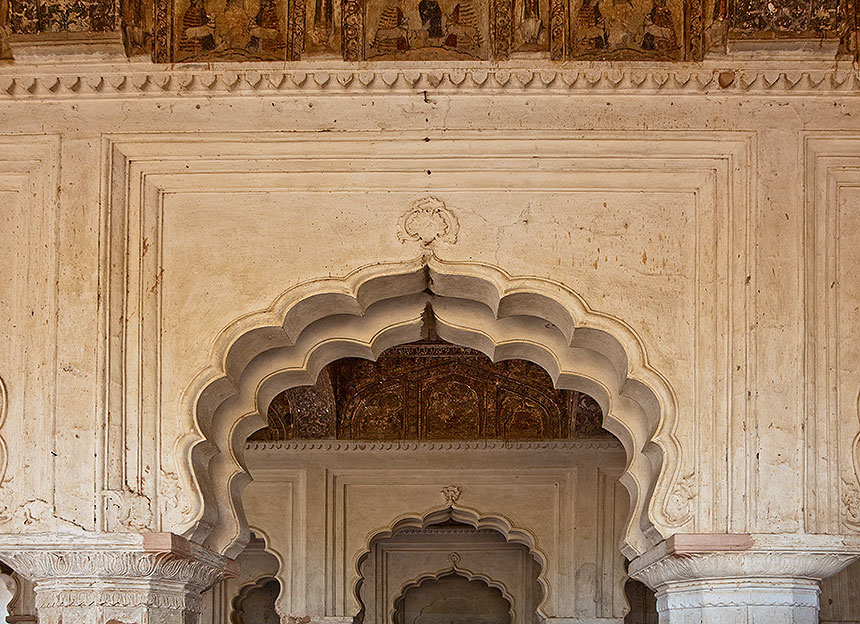
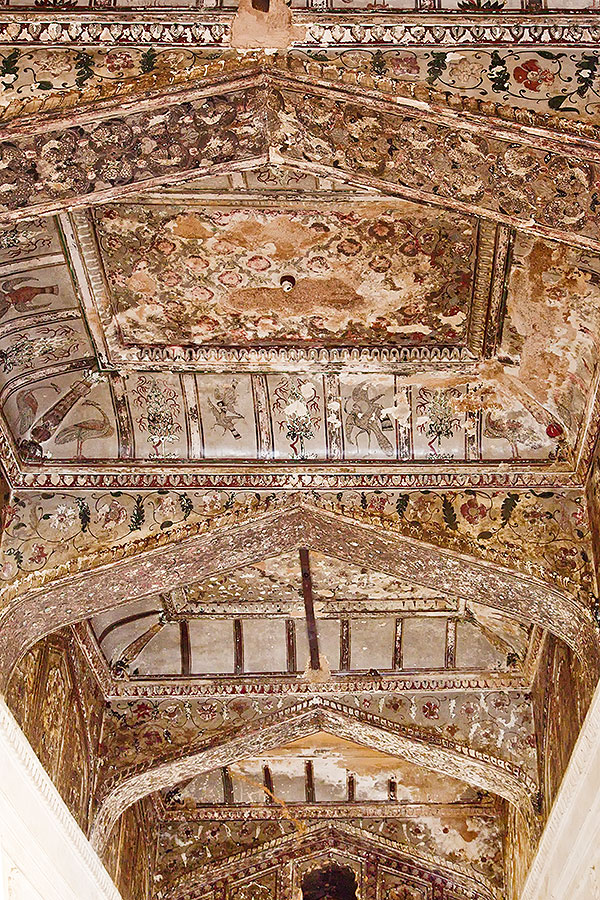
The decorated ceiling in this hall (above) features naturalistic art, as we have seen at some other sites.
A detail view of the center section appears below.
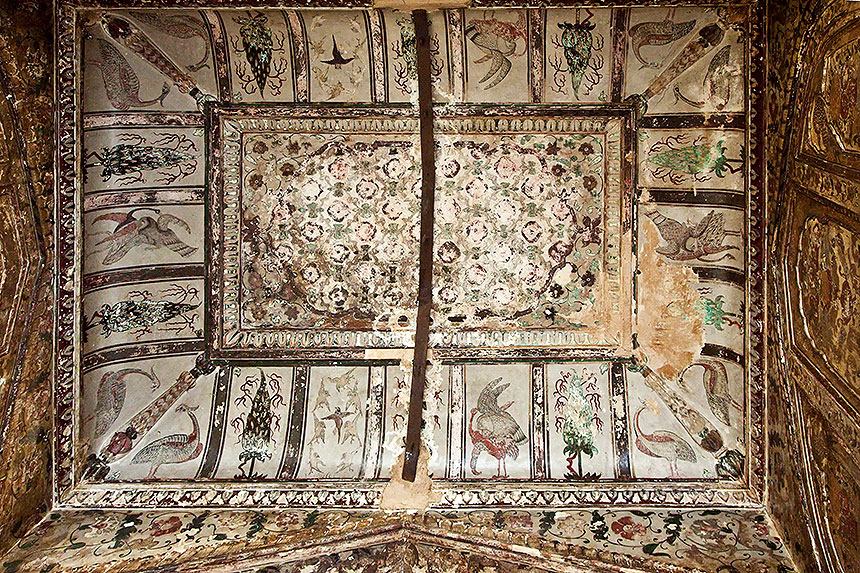
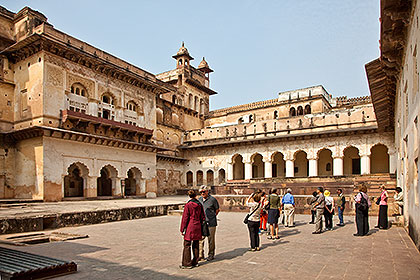
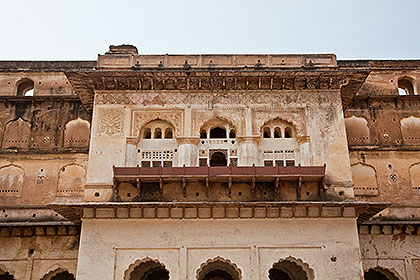
Raja Mahal interior courtyard, and detail of facade.
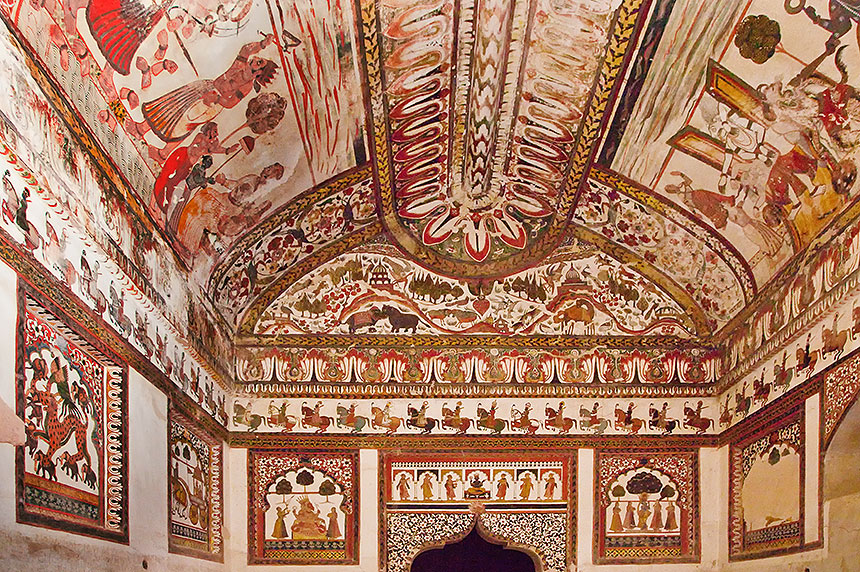
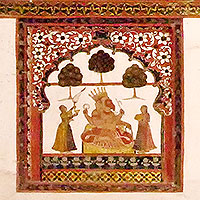
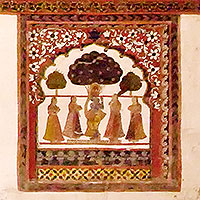
Above, elaborate murals depicting stories from Hindu mythology.
Left of the arch at the end of the room: "Lord Ganesh is seated on a throne flanked on one side by a female attendant holding a f1ywhisk while another lady stands in front holding a platter of ingredients for worship." Right of the arch at the end of the room: "Krishna playing his famous flute under a Kadamb tree while gopis carrying 'mayurpankh', food and water seem entranced. The elongated eyes, the attire of the gopikas and the colourful floral decorations surrounding the painting are typical of the Krishna paintings of the Bundeli Kalam where love for the divine is situated within a context of the popular Bhakti movement of Medieval north India." [www.mparchaeology.org]
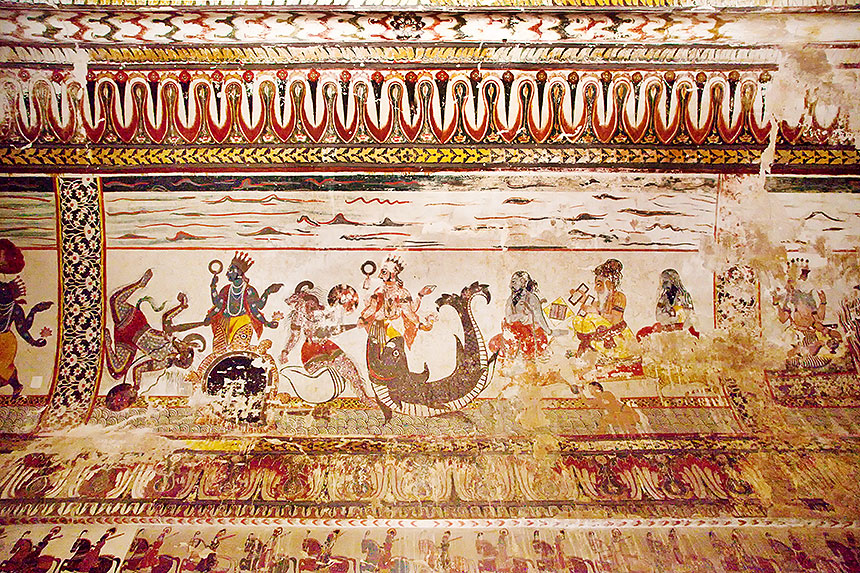
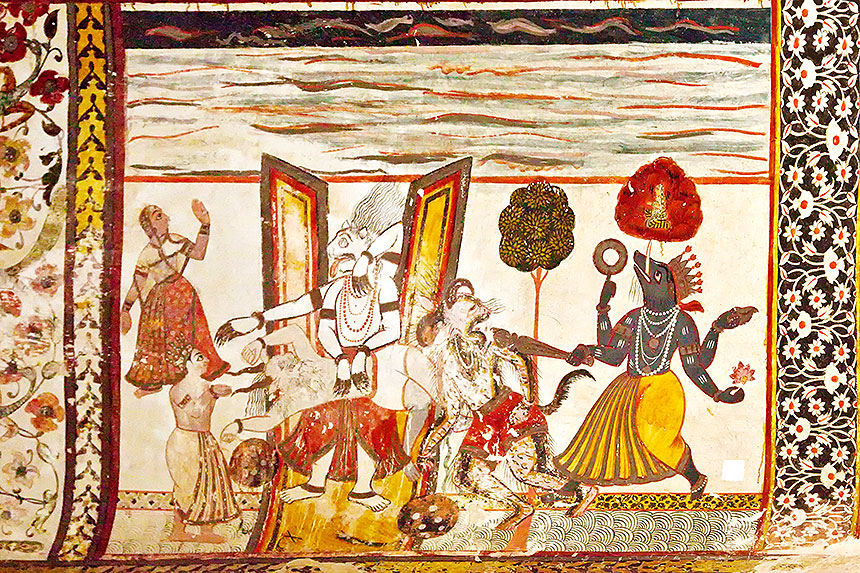
"This painting depicts two incarnations of Vishnu - Varah and Narsimgha. Narsimgha is shown here as bursting out from the pillars of the court and after seizing Hiranyakashyapu and laying him across his lap, he is ripping his belly. According to the story, Hiranyakashyapu could be killed neither by animal or man, neither indoors or outdoors, neither during day or night and not by weapons. Therefore, this novel strategy of killing him in twilight on the threshold between doors was devised by Narsimgha. On the right hand side of the painting is the Varaha incarnation where Vishnu as Varaha is shown vanquishing a demon as well as lifting the earth, thus symbolically representing him as a saviour of earth from evil." [www.mparchaeology.org]
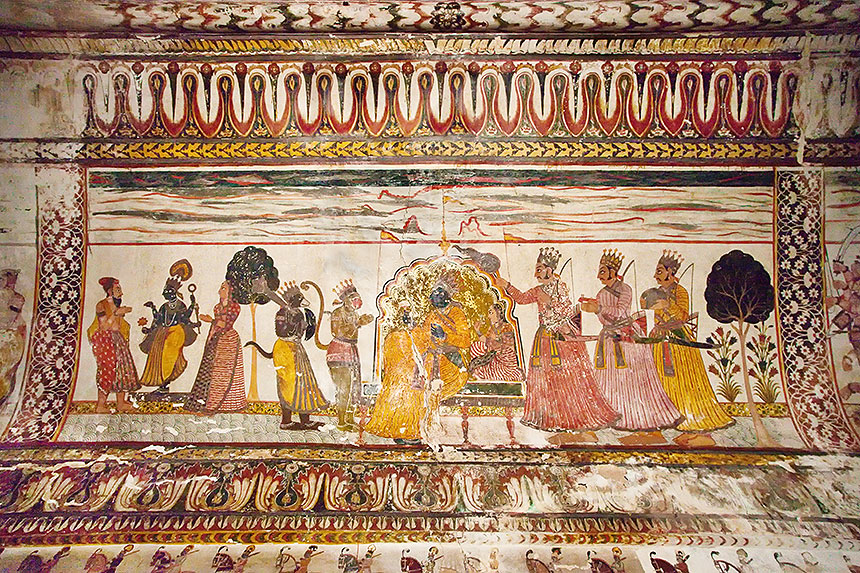
The Court of Rama. "More than a divine lord, Rama is treated as a king in Orchha and therefore, this painting shows all the opulence and grandeur of a royal court. Rama & Sita are placed on a large throne, while the three brothers stand behind looking exactly like princes or nobles in a feudal regime. Laxman holds a fly whisk and Bharat the wooden sandals of Rama, and all the three brothers are fully armed. In front of Rama & Sita, stand Hanuman and Jamwant in obeisance." [www.mparchaeology.org]
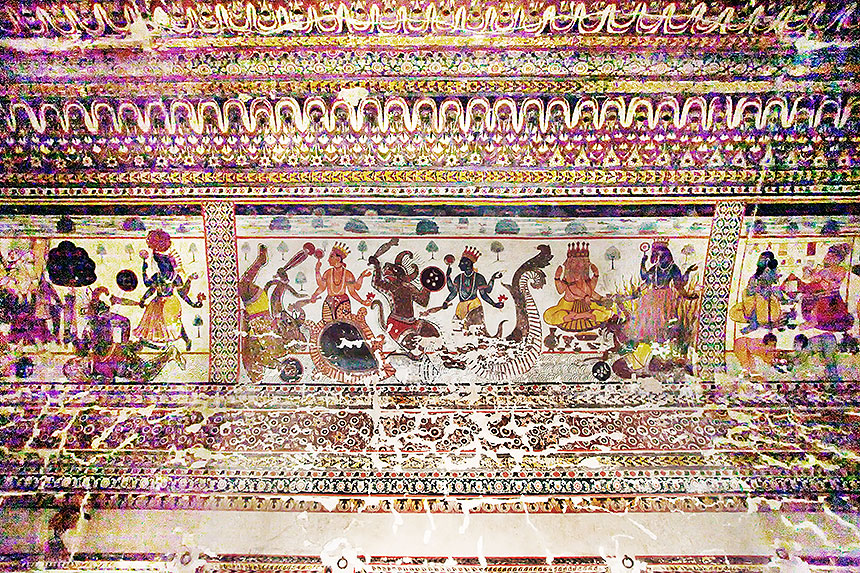
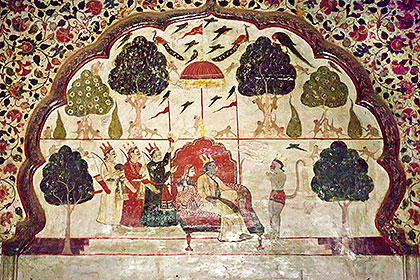
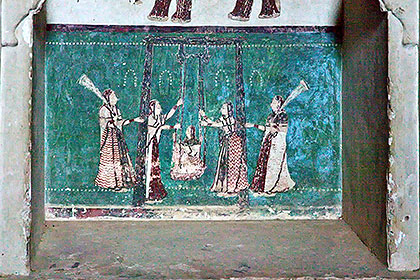

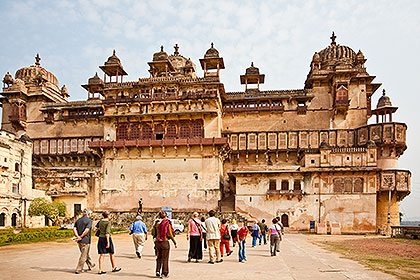
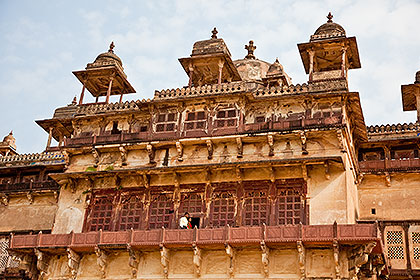
Now we have left the Raja Mahal and are approaching the other palace, the Jahangiri Mahal. Of course this is a different palace than the other Jahngiri Mahal we visited in the Agra Fort yesterday. This one was built by Bundela king Bir Sing Deo, who named it after the Mughal emperor Jahangir. But the emperor actually stayed in this palace only a single night. The square palace surrounds a central courtyard (below). Unlike the Raja Mahal we do not see much interior art here, but admire the architectural details (above and below).
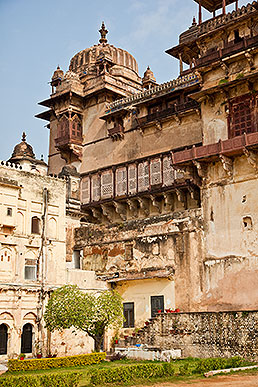
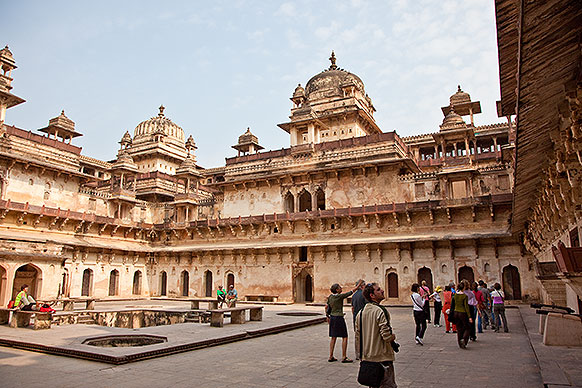
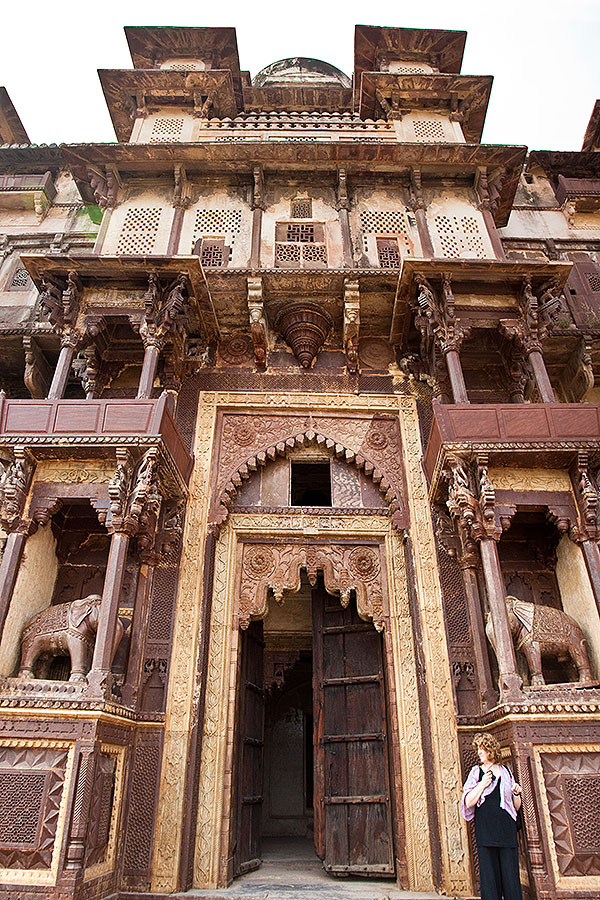
Melanie stands next to the main entrance door at the foot of an impressive facade. Some details are shown below.
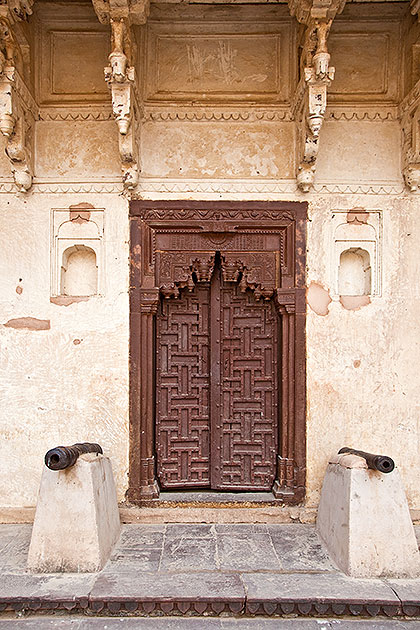

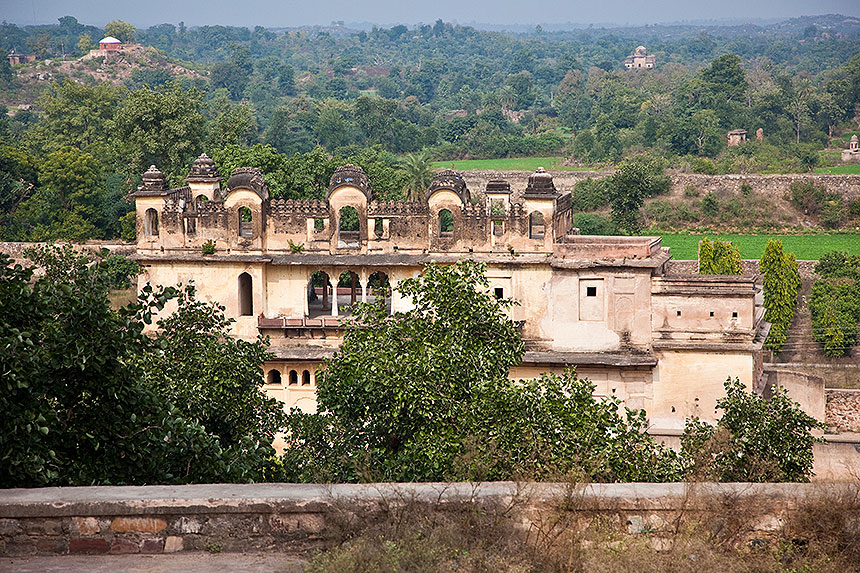
From the Jahangiri Mahal we are now looking north from former stables to the Hamam (a bathing house).
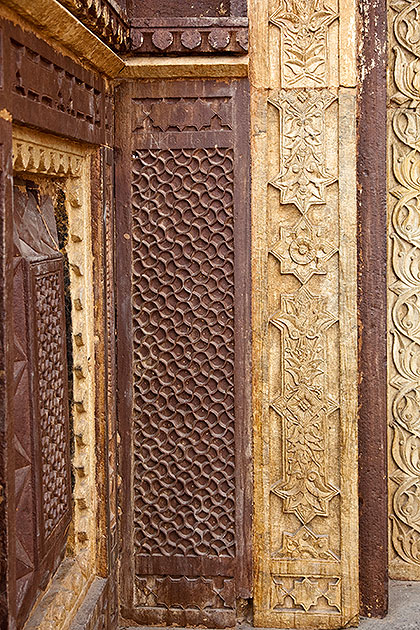
Sculpted sandstone details.
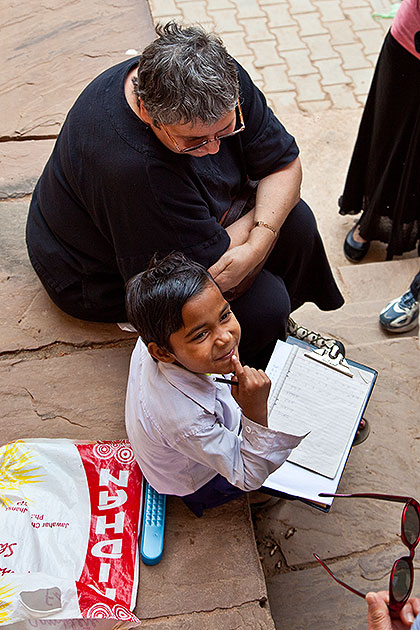
While we were inspecting the Jahangiri Mahal, Marlene stayed at the entrance and got well acquainted with this boy who was practicing his English language writing skills.
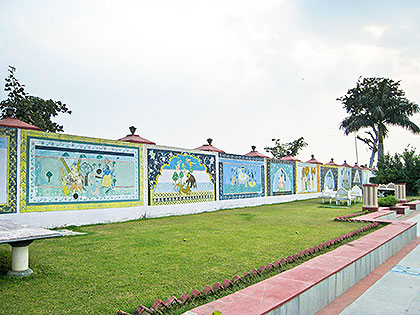
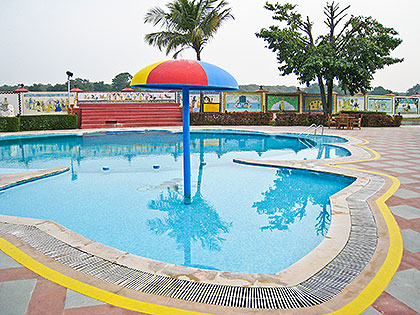
After leaving the palaces we have lunch at a nearby resort, then look around its grounds. Beyond the wall painted with colorful scenes, we see the Betwa River (below).
